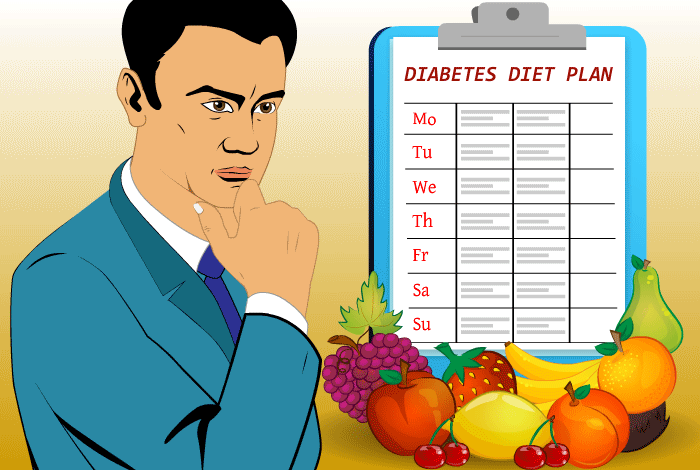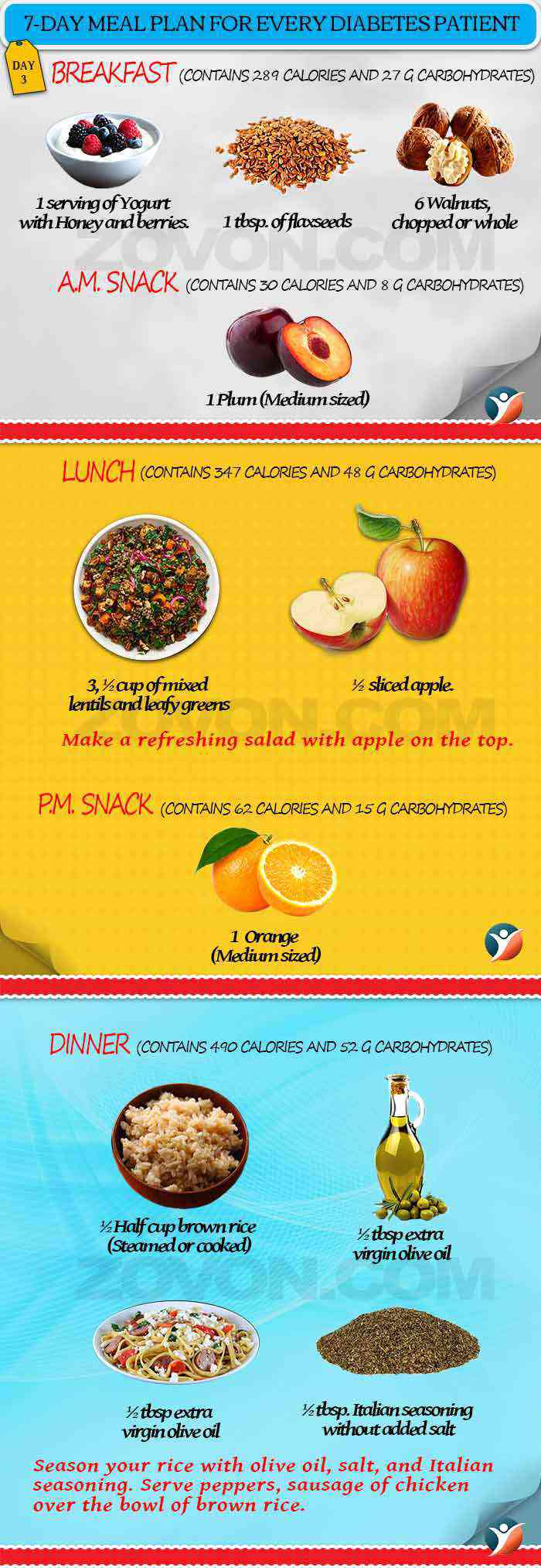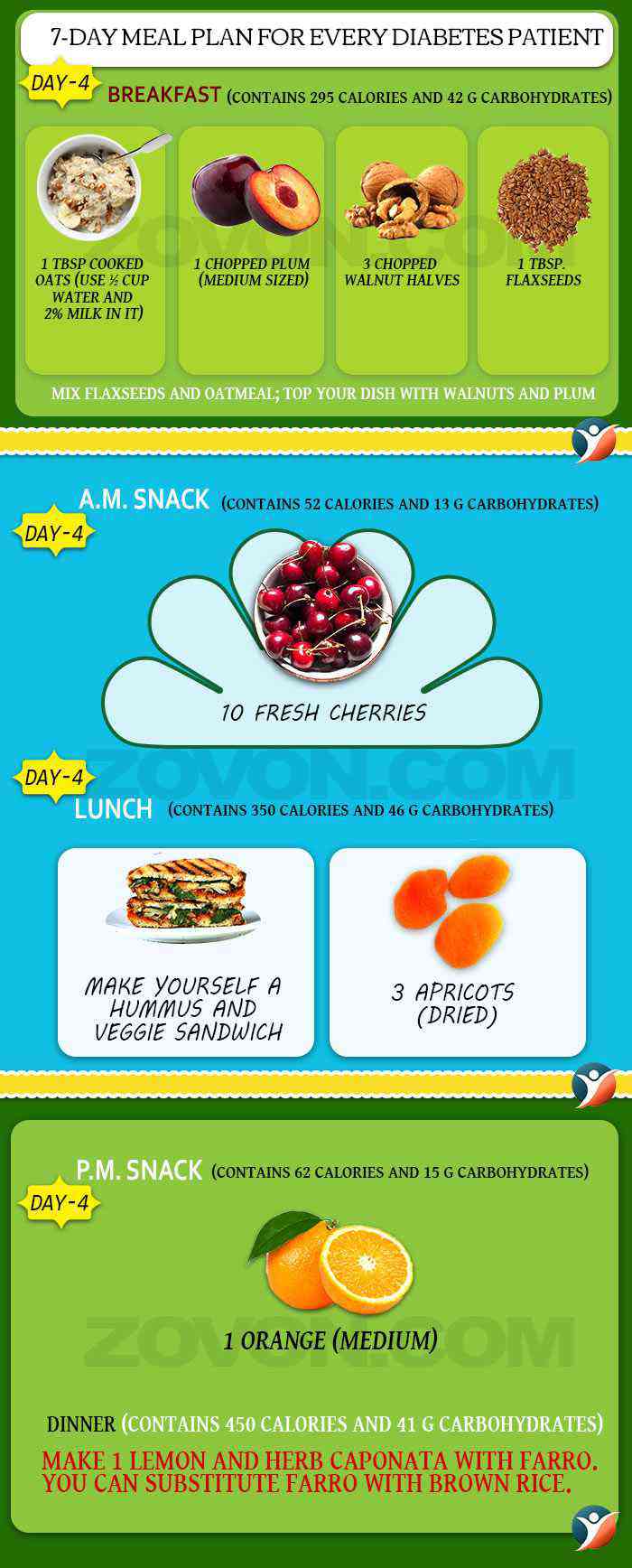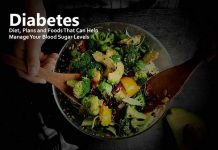
Diabetes Diet – What to Follow

Are your sugar levels skyrocketing on a regular basis and your doctor has put you under abhorred “diabetic” category? Are you confused about what to eat and which diet fad to follow? If you answer is affirmative, don’t worry we have got your back. While you can do a lot (seriously lot) to manage your sugar levels, a perfect diabetes diet can actually minimize your efforts and pain.
We bring you a comprehensive guide on what to eat and what not and most importantly, how much. Another cherry on the cake is you can easily follow the meal-plan we have recommended in here. Read on to know which diets might suit you best and help you in keeping your blood sugar levels in control.
Table of Content
- What is a Diabetes Diet?
- Purpose of a Diabetes Diet
- Types of Diabetes Diet
- Best Recommended Foods for Diabetics
- 7 Day Meal Plan for Every Diabetes Patient
- Conclusion
What is a Diabetes Diet?
A diabetes diet is a surprisingly beneficial, yet a simple healthy-eating plan that has all the nutritional values required for overall wellbeing even after compromising with the fats and calories. Its key elements are whole grains, fruits, and vegetables which naturally compensates for the unavailability of other food items on your plate. In fact, a diabetes diet is considered as the best eating plan for everyone, even if you’re a diabetic or not.
Before start designing your diabetes diet plate, first, you need to know the importance and reason behind incorporating a diabetes diet into your life.
Purpose of a Diabetes Diet
Diabetes or prediabetes-stricken lives are likely to follow a diabetes diet as recommended by their doctor or dietitian. Opting for a healthy-eating plan (Diabetes diet) helps to control natural blood sugar levels, manage weight, and avoid risk factors for developing any other health complications.
After eating excess fat and calories, our body responds in an undesirable manner to increase blood glucose levels. If you won’t keep a check of this glucose, it may lead to serious health issues, sometimes an organ failure.
You can easily keep track of this natural blood glucose and maintain it to a perfect point just by making smarter food choices. In case, if you need to lose weight or take the toll over diabetes, then a well-organized and nutritious diabetes diet is the best way to achieve your health goals naturally and safely.
Foods that you’re recommended by a dietitian to add to your diabetes diet can solely decide its type and impact your overall health. So, it’s better to know what kind of diabetes diet you’re eating and how this will change your life from an unhealthy eating bustle to a lively routine.
Types of Diabetes Diet
1. Low-Carb:
A low-carb diabetes diet is a healthy-eating plan that restricts carbohydrate intake into the body. The is a high protein option to follow with essential fats and healthy veggies.
A low-carb diet is not new in diabetes avenue. In fact, it is one of the first measures taken by diabetics to control their spiking blood sugar levels. It is a conventional diabetes diet that is in use long before the discovery of injectable insulin.
What to eat if you’re following a low-carb diet
- Meat: Lamb, pork, beef, poultry etc.
- Seafood and fish: Salmon, sardines, and mackerel. Avoid breading.
- Vegetables (above ground): Cabbage, Brussels sprouts, broccoli, kale, onions, and much more.
- Dairy products: Full-fat options such as Turkish/Greek yogurt, or sour cream.
- Berries: Blue or cranberries. You can also add a little-whipped cream.
Eating low-carb is not a substitution for diabetes treatment but people opting a low-carb diet will need less insulin and medication to treat and prevent complications.
2. Ketogenic:
Ketogenic diet is also a low-carb diet in which your body produces ketones in life and use them as energy. Breakdown of fats initiates the whole process called ketosis to provide you energy.
What to eat if you’re following a Ketogenic diet
- Fats and Oils: saturated fats, high-fat salad dressing, coconut oil etc.
- Sweeteners: monk fruit, erythritol, stevia.
- Nuts and Seeds: walnuts, macadamias, sunflower seeds, etc.
- Vegetables: broccoli, cauliflower, spinach, kale etc.
- Dairy: high fat cream, hard cheeses, butter, etc.
Both low-carb and Ketogenic diet is almost same but the protein and fat requirements and consumption are different in both the diets. So, never get confused between these two and control your diabetes diet after consulting with a dietitian.
3. Vegetarian:
As clear from the name, a vegetarian diet focuses only on the intake of vegetables, especially green leafy ones. It can help you in conditions like insulin resistance and protein spikes in the blood due to rise in blood-sugar levels.
What to eat if you’re following a Vegetarian diet
- Proteins: Look for more boiled lentils.
- Nuts: Almonds, walnuts, and macadamias.
- Dairy: Yogurt and creams.
- Vegetables: You can eat all the vegetables, especially leafy greens to control blood-sugar level.
A vegetarian diet can have variations, but you only have to stick to non-meat and poultry options to continue this diet. Beginnings will be hard but you’ll get used to of the taste of green and healthiest treats on the earth.
4. Vegan:
While following a vegan diet, you only need to rely on plant-based foods without having any interaction with animal and dairy goods. It helps to eliminate animal fat to experience a better insulin sensitivity.
What to eat if you’re following a Vegan diet
- Vegetables: Eat non-starchy ones such as Spinach, tomatoes, and broccoli.
- Oils: Use olive oil, canola, or avocado oil for cooking.
- High-fiber grains: Brown rice, bulgur etc.
A Vegan diet increases your carbohydrate intake and people following veganism have to get protein from plant source to complete the nutritional requirements of the body.
5. Carbohydrate Counting:
Usually, carbohydrate counting is only considered as a treatment plan to simulate insulin levels. It is a successful healthy-eating plan for both people with type-1 and type-3 diabetes.
Foods that Contain Carbohydrates
- Grains: Pasta, crackers, bread, and noodles.
- Dairy products: Yogurt and milk.
- Vegetables: Starchy such as peas, potato, and corn.
- Legumes: Lentils and dried beans.
6. The Dash Diet:
This is acronym used for Dietary Approaches to Stop Hypertension. This diet focuses on consuming and the wide range of foods to obtain perfect nutritional values. It not only controls diabetes in diabetics but it also reduces the chances of developing serious issues of prediabetes.
What to eat if you’re following a dash diet
- Vegetables and fruits: Baby carrots, asparagus, and cantaloupe
- Dairy: Nonfat milk and yogurt
- Nuts and legumes: Almonds, and walnuts
- Healthy oils and fats: Extra virgin olive oil and coconut oil
7. The Mediterranean Diet:
It is a basic healthy-eating plan that involves the cooking style of coasts of Mediterranean sea. There is a number of studies that suggest that following a Mediterranean diet can exceptionally help you to lose weight, prevent type-2 diabetes heart attacks, and premature death.
What to eat if you’re following a Mediterranean diet
- Meats: Wild salmon, lean pork, and chicken.
- Dairy products: Eggs, Parmesan cheese, Greek or plain yogurt
- Canned foods: Black beans, Garbanzo beans, Lentils
- Fruits and veggies: Blueberries, spinach, tomatoes, kale and much more.
8. Ornish Diet:
Ornish diet and lifestyle has been scientifically proven to reverse the effects of serious health complications such as type 2 diabetes, heart diseases, and even prostate cancer. With the timely and fewer calorie intake, an Ornish diet helps you to lose weight, maintain blood-sugar level, and keep your heart healthy.
What to eat if you’re following an Ornish diet
- Breakfast: Orange juice, whole-grain cereals, and nonfat yogurt.
- Lunch: Baked potato, spinach, broccoli, and fat-free cheese.
- Dinner: Peaches, whole-meal pasta, and tomatoes.
- Drinks: Coffee, water, and skim milk.
9. Weight Watchers:
It is more of a lifestyle change than a diet plan that can help you track your food choices to control your metabolic rate, blood-sugar levels and stay healthier by getting more into physical activities. This plan covers almost every food required to complete your body’s requirement to achieve an optimum health goal.
What to eat if you’re following a Weight Watchers Diet
Breakfast: Tomatoes, eggs, and avocados,
Lunch: Macaroni and cheese with bacon, Cheddar.
Snack: Greek Artichoke and veggies.
Dinner: Farro stew, Winter veggies.
Dessert: Bundt Cake, Lemon buttermilk.
While following a Weight Watchers diet you need to assign a SmartPoints value to your food items and eat them accordingly as recommended by your dietitian.
10. Mark Bittman’s VB6 Diet:
It is a variation in your Vegan diet plan in which you need to follow a non-dairy diet for 28 days. It includes fruits, vegetables, and other plants sources to fulfill your body needs and control blood-sugar levels.
What to eat if you’re following a Mark Bittman’s VB6 Die Diet
If you really wish to follow a Mark Bittman’s VB6 Diet routine then you need to purchase it from the official website or any authorized platform to follow this new trend of vegan before 6 PM.
If you really crave for something then it is advised to eat them after 6 PM to accomplish your Bittman’s diet goal.
Best Recommended Foods for Diabetics

1. Oatmeal for a Perfect Breakfast:
You won’t get more comforting thing than a mild warm bowl of oatmeal to start your morning. It is slower to digest and releases blood-sugar to prevent instant sugar spikes into the bloodstream. Some researchers reported that oats are found to reduce the risk of developing prediabetes by 30%. This amazing and small meal also help you fight against heart diseases and developing insulin resistance in patients suffering from diabetes.
2. Fish for a Healthy Heart:
People with highest levels of omega-3 fatty acids in the blood can easily suppress it with fatty fish. It reduces the body-wide inflammation that may worsen your diabetes and rapidly increases body weight. According to some studies, eating regular fatty fish also stimulates increases your metabolic rates and minimizes the risk of heart failure.
3. Apple For a ‘Fibery’ Dose:
An apple a day really does keep both diabetes and doctor away. Having an apple every day can surprisingly lower your bad cholesterol levels by 40 percent. Apples can also lower the serious risk of developing type 2 diabetes. This is a powerful fruit with high fiber contents that keep you energized throughout the day.
4. Cranberries to Lower Your Cholesterol:
Small in size, yet rich in essential elements such phytonutrients. Out of them, one is anthocyanins, which is considered as the best nutrient for diabetics. Few of them also have the antioxidant properties that help to lower blood prediabetes and cholesterol levels naturally.
5. Quinoa A “Hard to Pronounce” Gluten Free Option:
It is one of those food items that contain all of the nine amino acids essential to prevent spikes in your blood-sugar levels to keep you feel active and energized for longer. It is also a gluten-free option for diabetics with the high amount of proteins, vitamins, minerals, and fibers along with weight reducing properties.
6. Flaxseeds to Improve Insulin Sensitivity:
It is incredibly healthy and nutritious food that can control your blood-sugar level and decreases the risk of heart diseases. Flaxseeds also improve your body’s insulin sensitivity, gut health, and feeling of fullness to keep you motivated with an active body.
7. Red Onion for Adequate Antioxidants:
Don’t judge a book by its cover and same applies to the red onions. Cousin to the yellow and white onion, these are rich in antioxidant properties along with high potassium, folate, and fiber that is really good to heal and protect your heart.
8. Greek Yogurt for Probiotics:
For diabetics, it is a great choice to taste the dairy. It naturally improves blood-sugar to reduce the risk of heart diseases with its probiotic properties. According to studies dairy products including Greek yogurt is found to help to lose weight in the patients with type 2 diabetes. This dairy item has the high protein content to reduce appetite and decrease calorie intake in diabetics.
9. Nuts to Cut Inflammation:
Nuts are both nutritious and delicious with digestible carbs and other essential nutrients to control your diabetes. Nuts are responsible for the significant reduction in body insulin levels. Researchers also report that consumption of a variety of nuts may lower blood pressure and reduce inflammation to help the patients suffering from diabetes.
10. Leafy Greens to Keep Your Blood Pressure in Check:
They are extremely low in calories, yet nutritious food to consume for every diabetic. Leafy greens like spinach and kale are a good source of minerals and vitamins that reduce inflammation and reduces the risk of health conditions like high blood pressure and type 2 diabetes.[1]
11. Cinnamon Sprinkle to Enhance Taste and Improve Health:
This is a sweet seasoning to add taste and health benefits to your every meal. It contains a compound called hydroxychalcone, that may improve the body’s ability to absorb more blood sugar. Studies reported that cinnamon had reduced fasting blood-sugar levels in diabetics to keep them healthy for long.
7 Day Meal Plan for Every Diabetes Patient
This 7-day eating-plan features some simple meals and snacks to fulfill your daily nutritional requirements. It’s not only designed to control your blood-sugar level but this is also an exceptional treat to keep you healthy and avoid a variety of health complications. Take charge of your kitchen, and get ready to saute and stir every ingredient to taste the best diabetes diet.

Day- 1
Breakfast (Contains 294 Calories and 41 g Carbohydrates)
- 1 Medium plum (Chopped)
- 4 walnut halves (Chopped)
- ½ (Half cup) oats cooked in ½ (Half cup) water and 2% milk in it.
Top your cooked oats with walnuts and plum.
A.M Snack (Contains 96 Calories and 18 g Carbohydrates)
- ¾ cup of blueberries
- ¼ cup of plain Greek yogurt (Nonfat)
Top your cup of blueberries with yogurt.
Lunch (Contains 319 Calories and 37 g Carbohydrates)
- Apple Cheddar & Turkey Melt
- Whole-wheat bread (2 Slices)
- 2 tbsp whole-grain mustard seeds (divided)
- ½ half medium sized apple (Sliced)
- Low-sodium deli turkey of 2 oz.
- 2 tbsp Cheddar cheese (Shredded)
- 1 cup of mixed green veggies
Top your one bread slice with 1tbsp. of mustard, turkey, apple, and 1 tbsp of cheese. Now, top the other with rest of the ingredients ( 1tbsp. Cheese, and mustard). Toast the sandwich until cheese melts. Now, add green veggies to your prepared sandwich before serving.
P.M. Snack (Contains 58 calories and 16 g carbohydrates)
- ½ Apple (Medium and sliced)
- Pinch of cinnamon
- ½ Half tbsp. honey
Coat the slices with honey and then sprinkle with cinnamon to add more taste.
Dinner (Contains 417 calories and 54 g carbohydrates)
- 1 cup of Vegetable soup
- Goat cheese with rosemary (only 1)
Tips to save both your time and money: Save vegetable soup for your Day 2-6 lunch.
Save 1 3/4 cups soup for lunch on Day 2, and another 2 cups for lunch on Day 6.
Day – 2

- Breakfast (Contains 297 calories and 33 g carbohydrates)
- Make a Bagel and Avocado toast for you (Only 1 serving)
- 25 pistachios (sliced or crushed)
- ½ cup of blueberries
Top your sandwich with rest of the ingredients to add more taste and health benefits to your day 2 breakfast.
A.M. Snack (Contains 52 calories and 13 g carbohydrates)
• 10 fresh cherries
Looking for more? Nope, that’s enough!
Lunch (Contains 314 calories and 47 g carbohydrates)
- ¾ cup of Vegetable soup that you saved earlier
- Whole-wheat baguette ( 2 slices of ¼ inch thick)
P.M. Snack (Contains 95 calories and 25 g carbohydrates)
- 1 medium-sized apple (Sliced)
- Pinch of cinnamon
Sprinkle cinnamon on your apple to taste the snack.
Dinner (Contains 420 calories and 48 g carbohydrates)
- Roasted lentils
- Green Veggies
Make yourself a salad by dressing them with the green goddess.
- Try making a chocolate banana-bites to serve as dessert.
Tip: Cook an extra cup of lentils to serve in your day 3 lunch.
Day – 3

Breakfast (Contains 289 calories and 27 g carbohydrates)
- 1 serving of Yogurt with Honey and berries.
- 1 tbsp. of flaxseeds
- 6 Walnuts, chopped or whole
Boots omega-3 and fiber content by adding flaxseeds to your bowl of yogurt. Top it with walnuts to add a nutty taste.
A.M. Snack (Contains 30 calories and 8 g carbohydrates)
- 1 Plum (Medium sized)
- Lunch (Contains 347 calories and 48 g carbohydrates)
- 3, ½ cup of Mixed Lentils and Leafy Greens
- ½ sliced apple.
Make a refreshing salad with apple on the top.
P.M. Snack (Contains 62 calories and 15 g carbohydrates)
- 1 Orange (Medium sized)
- Dinner (Contains 490 calories and 52 g carbohydrates)
- ½ Half cup brown rice (Steamed or cooked)
- ½ tbsp. extra virgin olive oil
- 1, 1/3 cup of peppers and chicken sausage
- ½ tbsp. Italian seasoning without added salt
- Salt
Season your rice with olive oil, salt, and Italian seasoning. Serve peppers, sausage of chicken over the bowl of brown rice.
- 1 and ½ cup of mixed leafy greens
- ¼ cup of sliced cucumbers
- ¼ cup of carrot (shredded)
- 1 tbsp. Premade dressing to add an Italian punch.
- Combine carrot, greens, cucumber, and season it with Italian seasoning.
Tip: Cook a half cup of brown rice to serve it in day 7 dinner.
Day Total: 63 g protein, 1,218 calories, 45 g fat, 31 g fiber, 151 g carbohydrates, 75 g sugar, 830 mg sodium 9 g saturated fat.
Day 4

Breakfast (Contains 295 calories and 42 g carbohydrates)
- 1 tbsp. Cooked oats (Use ½ cup water and 2% milk in it)
- 1 chopped plum (Medium sized)
- 3 chopped walnut halves
- 1 tbsp. Flaxseeds
Mix flaxseeds and oatmeal; top your dish with walnuts and plum.
A.M. Snack (Contains 52 calories and 13 g carbohydrates)
10 fresh cherries
Lunch (Contains 350 calories and 46 g carbohydrates)
- Make yourself a Hummus and Veggie Sandwich
- 3 apricots (Dried)
P.M. Snack (Contains 62 calories and 15 g carbohydrates)
- 1 Orange (Medium)
- Dinner (Contains 450 calories and 41 g carbohydrates)
Make 1 Lemon and Herb Caponata with Farro. You can substitute farro with brown rice.
Day Total: 61 g protein, 1,209 calories, 1,032 mg sodium, 32 g fiber, 158 g carbohydrates, 61 g sugar, 8 g saturated fat, 43 g fat.
Day – 5

Breakfast (Contains 276 calories and 44 g carbohydrates)
- 1 Bagel and Avocado Toast
- 20 fresh cherries
A.M. Snack (Contains 51 calories and 13 g carbohydrates)
- 6 Apricots (Dried)
Lunch (Contains 350 calories and 41 g carbohydrates)
- Pear Pita melt with turkey
- ½ Whole-wheat pita ( large and round, save other half for your day 7 lunch)
- 3, ½ deli turkey (low-sodium)
- ½ pear (medium and sliced)
- 2 tbsp. Cheddar cheese (shredded)
- 1 cup of mixed leafy greens
Stuff pita with pear, cheese and turkey. Toast it until cheese melts. Add greens to your toasted pita before serving.
- 1 plum (medium sized)
- P.M. Snack (Contains 52 calories and 14 g carbohydrates)
- ½ pear (medium, sliced)
- Add cinnamon to taste
Sprinkle the pears with cinnamon to enhance the taste.
Dinner (Contains 448 calories and 38 g carbohydrates)
Meatballs with Spaghetti Squash (1 serving)
1 slice of whole-wheat baguette
½ tbsp of goat cheese
¼ tbsp of rosemary (Fresh and chopped)
Serve toasted baguette with rosemary and cheese.
Day Total: 64 g protein, 37 g fat, 29 g fiber, 151 g carbohydrates, 9 g saturated fat, 74 g sugar, 1,738 mg sodium, 1,176 calories
Day 6

Breakfast (Contains 291 calories and 28 g carbohydrates)
- 1 serving of yogurt with honey and blueberries
- 5 Walnuts chopped
- 2 tbsp. Flaxseeds
Mix flaxseeds and yogurt to top them with walnuts.
A.M. Snack (Contains 72 calories and 18 g carbohydrates)
• 14 freshly picked cherries
Lunch (Contains 337 calories and 42 g carbohydrates)
- 2, ½ cup of Vegetable soup
P.M. Snack (Contains 62 calories and 15 g carbohydrates)
- 1 medium-sized orange
Dinner (Contains 422 calories and 53 g carbohydrates)
- Spinach with Apple-Glazed Chicken
- ½ butternut squash
- 2 tbsp extra-virgin oil and fresh thyme to garnish
- Salt and pepper to add extra taste
- Toss the squash with thyme and oil. Season it with pepper and salt.
Day Total: 1,541 mg sodium, 1,184 calories, 78 g protein, 156 g carbohydrates, 88 g sugar, 34 g fat, 27 g total fiber, 5 g saturated fat.
Day 7

Breakfast (Contains 300 calories and 40 g carbohydrates)
- 2 Blueberry Pancakes
- 2 tbsp flaxseed
- 3 tbsp blueberries (frozen or fresh)
Top your blueberries with flaxseed to make a salad.
A.M. Snack (Contains 62 calories and 15 g carbohydrates)
- 1 medium-sized orange
Lunch (Contains 325 calories and 35 g carbohydrates)
- 2 cups mixed leafy greens
- ½ cup cucumber (sliced)
- ¼ cup carrot (sliced)
- Garlic-Oregano Vinaigrette,
- Italian dressing (premade)
Combine cucumber, carrot, vinaigrette and greens.
- ¼ cup of hummus
- ½ large pita (Whole-wheat)
P.M. Snack (Contains 95 calories and 25 g carbohydrates)
- 1 medium-sized
Dinner (Contains 444 calories and 48 g carbohydrates)
- ½ cup brown rice (cooked)
- 1 Mushroom Pork Chops
- ¾ cup Sun-dried tomato pesto with Roasted Brussels Sprouts
Combine all the ingredients and sprinkle sprouts before serving.
Day Total: 54 g protein, 1,224 calories, 164 g carbohydrates, 57 g sugar, 28 g fiber, 44 g fat, 1,270 mg sodium, 7 g saturated fat.
Note: The meal plan that we have mentioned above is only controlled the intake of essentials like calories, fiber, carbohydrates, sodium and saturated fats. If you really wish to start a diabetes diet in order to transform your health then first consult a registered dietitian about the best suitable diabetes diet plan for you.
Conclusion
Embracing a healthy and well-organized eating plan is one the best ways to keep your blood-sugar level under the safe limit and prevent future health complications caused by diabetes. You can also lose weight by tailoring the diets by setting your own specific goals.
Apart from managing your diabetes, a perfect diet also offers other health benefits. It is likely to reduce the risk of developing certain cancers and cardiovascular diseases.
If you have diabetes or diagnosed with this health issue then it is really important to talk to your doctor or visit a registered dietitian to create a balanced eating plan that works best for you. Do not stray from the prescribed diet, otherwise, it may worsen the health by fluctuating blood-sugar to a dangerous level.
If you liked the article or anyhow it helped you to control your worsening diabetic condition then do share it with people in need of a happier and healthier life. Even if you have any advise and recommendations, drop them in our comments section. We love to hear from you. Eat healthily, live better!





